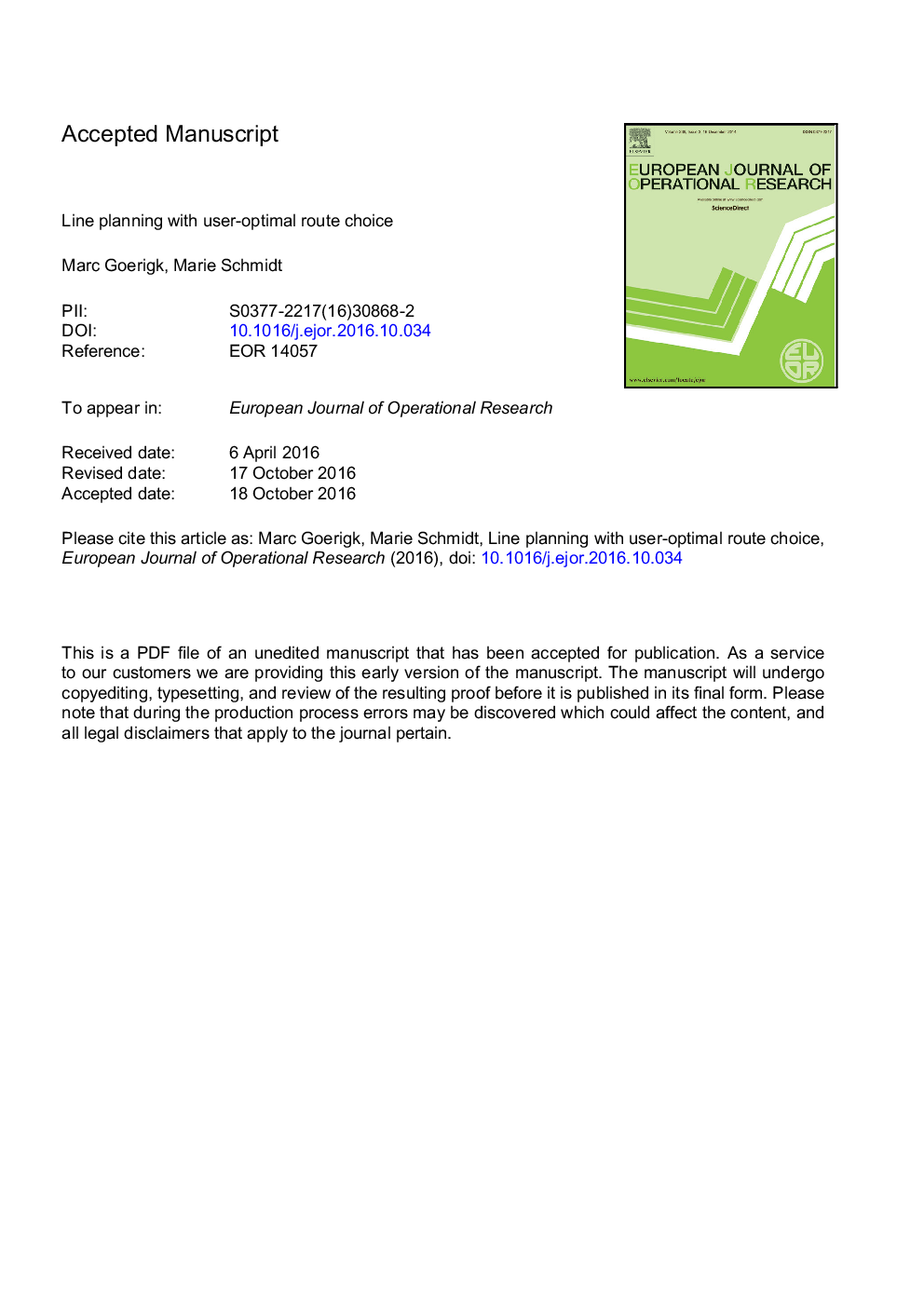| Article ID | Journal | Published Year | Pages | File Type |
|---|---|---|---|---|
| 4960179 | European Journal of Operational Research | 2017 | 27 Pages |
Abstract
We consider the problem of designing lines in a public transport system, where we include user-optimal route choice. The model we develop ensures that there is enough capacity present for every passenger to travel on a shortest route. We present two different integer programming formulations for this problem, and discuss exact solution approaches. To solve large-scale line planning instances, we also implemented a genetic solution algorithms. We test our algorithms in computational experiments using randomly generated instances along realistic data, as well as a realistic instance modeling the German long-distance network. We examine the advantages and disadvantages of using such user-optimal solutions, and show that our algorithms sufficiently scale with instance size to be used for practical purposes.
Related Topics
Physical Sciences and Engineering
Computer Science
Computer Science (General)
Authors
Marc Goerigk, Marie Schmidt,
